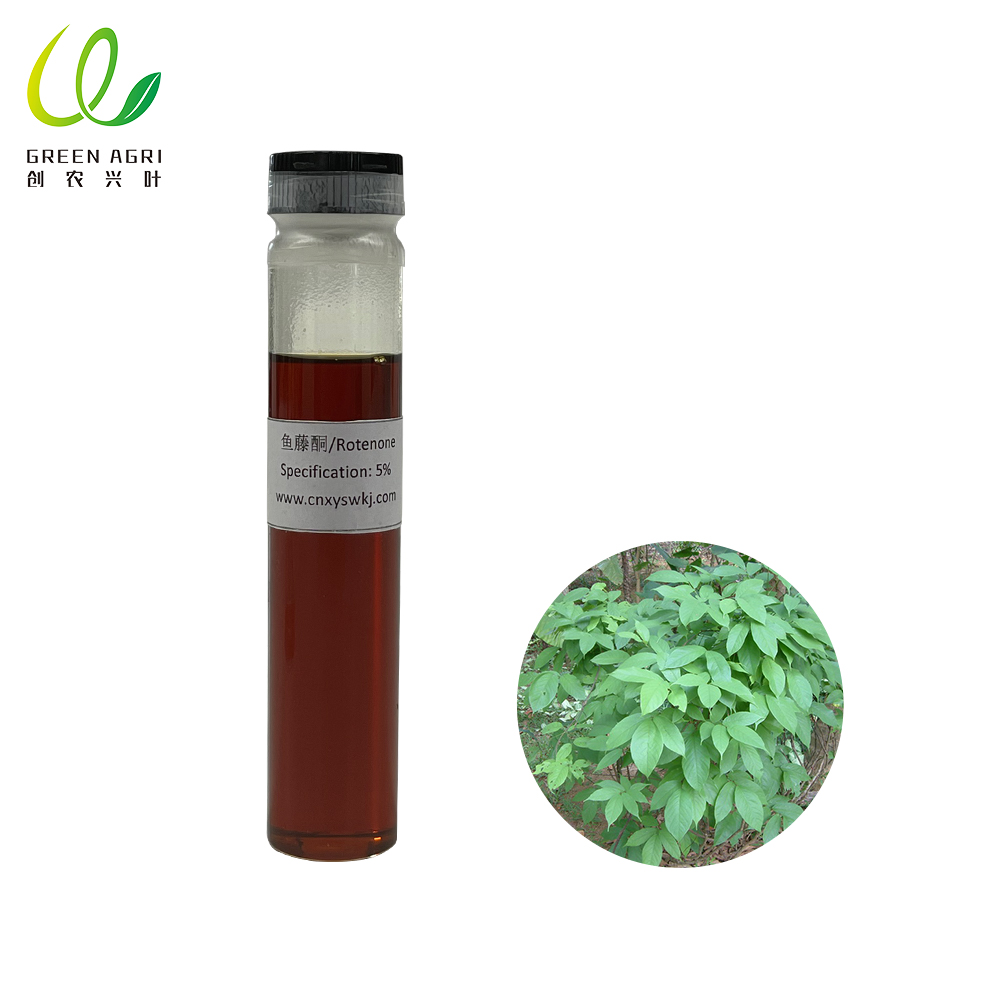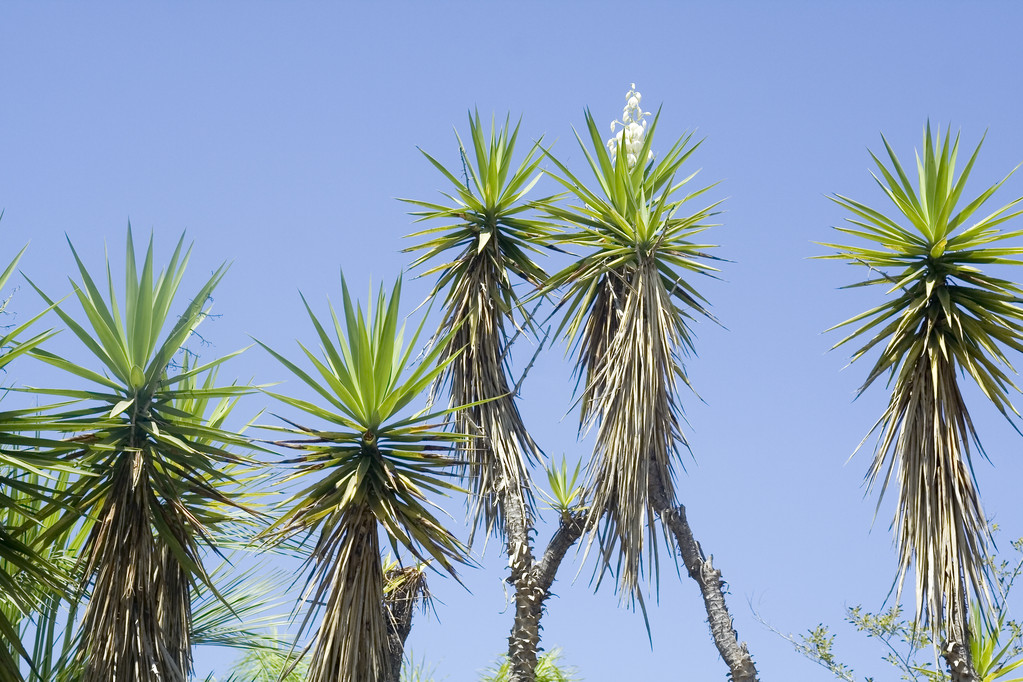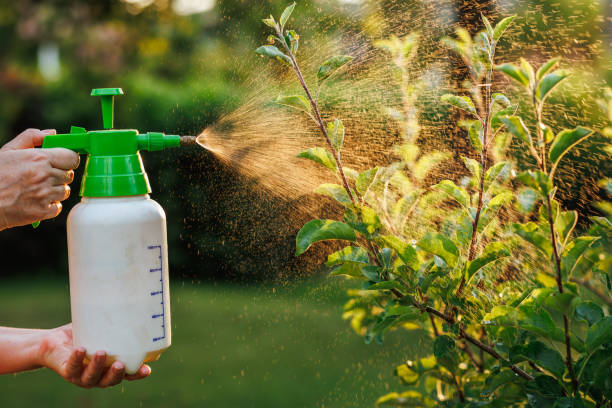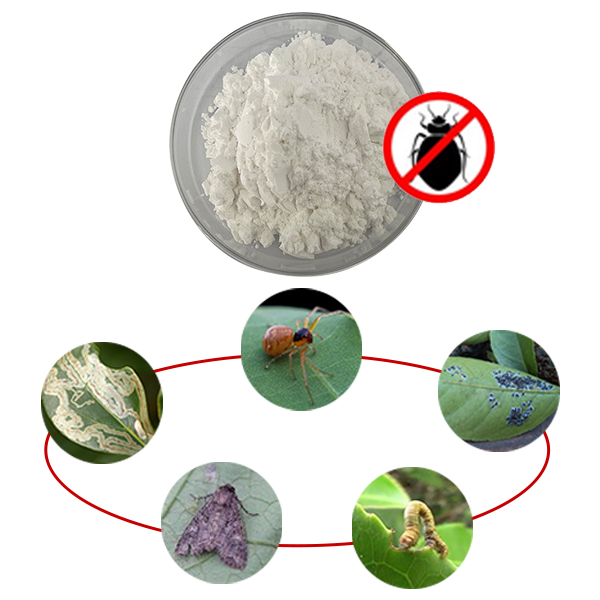Follow Us:

Embrace Rotenone for a Sustainable Future
In the ever-evolving world of agriculture, finding effective and sustainable pest control solutions is paramount. One such solution that has stood the test of time is rotenone. As a plant extract manufacturer, I’m excited to share the numerous benefits of rotenone for farmers, and how it can play a vital role in enhancing your agricultural practices.
What is Rotenone?
Rotenone is a naturally occurring compound extracted from the roots of certain plants, primarily from the Derris and Lonchocarpus species. Rotenone was used in the past as a broad-spectrum insecticides, and is still used as a piscicide to remove alien fish species. Its mode of action disrupts cellular respiration in insects, leading to their demise, while posing minimal risk to mammals ad birds when used properly.
Chemical Composition and Properties
| Specification | Details |
| Chemical Name | Rotenone |
| Chemical Formula | C23H22O6 |
| CAS Number | 83-79-4 |
| Molecular Weight | 394.42 g/mol |
| Appearance | Brown Liquid, Brown Powder |
| Odor | Mild, characteristic |
| Solubility | Soluble in organic solvents (e.g., acetone, ethanol) |
| Stability | Stable under normal conditions; degrades in sunlight and alkaline conditions |
| pH Range | Neutral to slightly acidic (pH 5-7) |
| Toxicity | Low toxicity to mammals; moderate to high toxicity to fish and aquatic invertebrates |
| Application Rates | Varies by crop and pest; typically 0.5 to 5.0 lbs/acre depending on formulation and target pests |
| Mode of Action | Disrupts cellular respiration in insects |
| Shelf Life | 2-3 years when stored properly |
| Storage Conditions | Cool, dry place away from sunlight |

Rotenone Mechanism of Action
Rotenone is a naturally occurring compound that acts primarily as an rotenone insecticide and rotenone pesticide. Its mechanism of action involves the disruption of cellular respiration. Here’s a summary of how it works:
- Inhibition of Complex I: Rotenone selectively inhibits the activity of Complex I (NADH oxidoreductase) in the mitochondrial electron transport chain. This complex is crucial for the transfer of electrons from NADH to ubiquinone.
- Decreased ATP Production: By inhibiting Complex I, rotenone prevents the proper transfer of electrons, leading to a decrease in the proton gradient across the mitochondrial membrane. This results in reduced ATP synthesis, as the proton gradient is essential for ATP production through oxidative phosphorylation.
- Increased Reactive Oxygen Species (ROS): The disruption in electron transport can lead to the generation of reactive oxygen species, contributing to oxidative stress and potential cellular damage.
- Cellular Energy Deficiency: As ATP levels drop, cells experience energy deficiency, which can impair various cellular functions and ultimately lead to cell death, particularly in energy-demanding tissues like the brain.
Overall, the inhibition of mitochondrial respiration is the primary action through which rotenone exerts its toxic effects, impacting both insects and other organisms, including humans at high exposures.
Rotenone Applications
For Pest Control:
One of the primary advantages of using rotenone is its effectiveness against various pests. Whether you’re dealing with aphids, beetles, or caterpillars, rotenone can provide a strong defense against these common agricultural nuisances. Its broad-spectrum activity ensures that farmers can maintain healthier crops without resorting to synthetic pesticides that may have harmful side effects.
For aquaculture:
1. Use 4% rotenona emulsifiable concentrate to clear ponds for aquaculture of shrimp: 0.025mg/L of rotenone can poison fish, but shrimp can survive in 10mg/L rotenone solution. Rotenone is destructive to fish and other organisms on a large scale, so it is suitable for aquaculture of shrimp and other shrimps. Rotenone can also be used as a snail killer and to capture ornamental fish.
2. Capture ornamental fish: Many fish will quickly float to the surface in a solution with a lethal concentration of rotenone (0.025mg/L). At this time, if they are transferred to a methylene salt solution with a concentration of 5-10mg/L in time, these fish will immediately regain their vitality. Using this characteristic of rotenone, high-quality ornamental fish can be captured. This method is mainly used in some scientific research and academic research.
3. 5-7% Derris root powder for pond cleaning
Advantages of Rotenone
1. Natural and Organic Certification
With the growing demand for organic produce, farmers are increasingly seeking natural pest control options. Rotenona is a biodegradable, organic insecticide that aligns perfectly with organic farming practices. By using rotenone, farmers can achieve organic certification, attracting environmentally conscious consumers and potentially increasing their market share.
2. Minimal Environmental Impact
One of the major concerns in modern agriculture is the environmental impact of chemical pesticides. Rotenon is less persistent in the environment compared to synthetic alternatives. It breaks down quickly when exposed to sunlight and air, reducing the risk of soil and water contamination. This characteristic makes it an eco-friendly choice for sustainable farming.
3. Safety for Beneficial Insects
Unlike many chemical pesticides, rotenone is relatively safe for beneficial insects, such as bees and ladybugs. When used judiciously, it can target harmful pests while preserving the vital organisms that contribute to healthy ecosystems. This balance helps maintain biodiversity on the farm, supporting pollination and natural pest control.
4. Versatile Application
Rotenone can be applied in various forms, including powders, sprays, and granules, making it adaptable for different farming practices. It can be used in home gardens, vegetable fields, orchards, and more. This versatility allows farmers to integrate it seamlessly into their pest management strategies.
5. Economic Benefits
By adopting rotenone as part of your pest control regimen, farmers can potentially reduce costs associated with chemical pesticide purchases and application. Moreover, by minimizing pest damage, rotenone can lead to increased crop yields, ultimately contributing to improved profitability.
6. Supporting Integrated Pest Management (IPM)
Rotenone fits well within an Integrated Pest Management (IPM) approach, which emphasizes the use of multiple strategies to control pests. By incorporating rotenone with other cultural, biological, and mechanical control methods, farmers can create a comprehensive pest management system that is both effective and environmentally responsible.
Which Companies Would Need Rotenone?
- Agricultural Companies (Crop Producers and Organic Farms)
- Aquaculture Firm (Fish Farming Operations)
- Pesticide Manufacturer (Natural Pesticide Formulators)
- Horticultural Businesses (Greenhouses and Nurseries)
- Research Institutions (Agricultural Research Facilities)
- Environmental Consulting Firms (Ecological Restoration Projects)
- Public Health Organizations (Vector Control Programs)
- Land Management Agencies (Forestry and Wildlife Management)
- Home and Garden Supply Retailers (Garden Centers and Nurseries)
- Food Processing Companies (Post-Harvest Pest Management)
What Factors Should Be Considered When Choosing a Rotenone Manufacturer?
There are several factors you should consider when choosing a reliable rotenone supplier:
- Product Quality and Purity
- Sourcing Practices
- Regulatory Compliance
- Experience and Reputation
- Formulation Options
- Customer Support
- Pricing and Value
- Research and Development
- Distribution and Availability
- Environmental Impact
Choosing the right manufacturer for rotenon involves evaluating quality, manufacturing processes, experience, regulatory compliance, pricing, customer support, and logistics. By carefully considering these factors, you can select a reputable manufacturer that meets your requirements and provides high-quality rotenone.
By choosing our factory as your rotenone supplier, you’re not just purchasing a product; you’re partnering with a dedicated team committed to supporting your agricultural success. The quality of our products is traceable and the production process is verifiable (All products are pasteurized to effectively kill harmful microorganisms, and an advanced metal detection system is used to identify and eliminate any foreign matter during the production process). We produce liquid rotenone and rotenone powder. Choose GREENAGRI for Your rotenone supply, Contact us now! Let us help you achieve healthy crops and effective pest control solutions!
Conclusion
As a producer of rotenone, I wholeheartedly believe in its potential to revolutionize pest management for farmers. With its effective pest control capabilities, organic certification potential, and minimal environmental impact, rotenone offers a sustainable solution that aligns with modern agricultural practices.


















